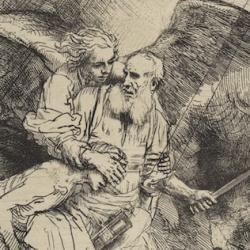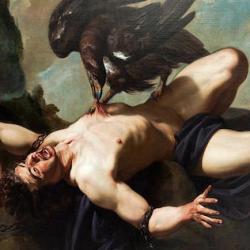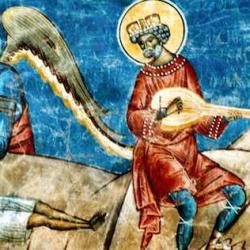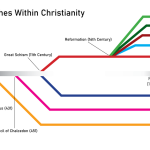Did the Greeks sacrifice all the animals they ate? Gunnel Ekroth (“Meat in ancient Greece”) says No, though he also says that most of the meat they ate was “sacred,” even if not “sacrificial.” The distinction of the two is crucial.
Drawing mainly from osteological evidence to supplement that from written sources and iconography, he argues that the Greek diet was much more varied than we might have thought, and we can tell from the bone evidence that many of the animals were consumed in temple areas: “Present
in the osteological evidence are also dogs, horses, donkeys, mules, cats,
chicken, geese, pigeons, red deer, fallow deer, roe deer, wild boars, foxes,
bears, wolves, weasels, turtles, snakes, crocodiles, gazelles, camels,
vultures and lions.” These exotic animals are rare: “Bones from species other than cattle, sheep, goats andpigs only represent a small part of the osteological material recovered in any
sanctuary.” But they are there, and Ekroth thinks they were consumed – including lions, perhaps bears, foxes, and weasels too (256-8).
Though consumed in sacred areas, the bones suggest that they were not burned on the altar. There are knife marks that indicate butchering, but not often burns or calcification. He suggests that many animals would have been butchered at home and their meat brought to the sanctuary to supplement the meat from the sacrificed animals. None of these animals would be offered to the gods, but the meal would still be a sacred meal: “The osteological material can
be taken to demonstrate that all bones recovered in a sanctuary cannot
automatically be taken to represent sacrificial victims in the traditional
sense and that some of the animals eaten may have been slaughtered in
the sanctuary without having parts cut out and burnt on the altar. The
bone evidence here constitutes an argument for different kinds of rituals
at the killing of an animal; the elaborate, full-scale thysia, as well as more
scaled-down rituals, which were both simpler and quicker and which
may have been used at the additional killings in the sanctuary as well as
in the domestic context or the market. To these animals slaughtered in
the sanctuaries could be added meat brought there from animals killed at home, at hunts or in the market consisting of game, dogs, horses and
perhaps even kenebreia, whole or in parts” (268-9). Dogs and horses could provide sacred meat; there not sacrificial.
Another key feature of his argument is the observation that boiling was the most common method of preparing meat. Boiling is the great equalizer of meat; in the cauldron, dog, croc, roe, and button all blend together. This was a practical benefit. Those who brought donkey for the sacred feast throw it into a pot, and may get an upgrade, but either way they don’t have to eat straight donkey. The pot also blurs the distinctions between “sacred” and “profane.” All that’s boiled in the pot becomes equally sacred, whatever its origin and whatever kind of animal it came from.
(Gunnel Ekroth, “Meat in ancient Greece: sacrifice, sacred or secular?” Food & History 5:1 [2007] 249-72.)











